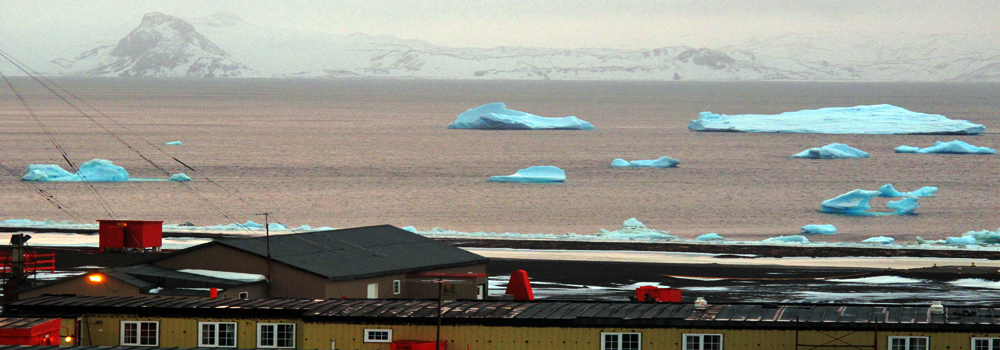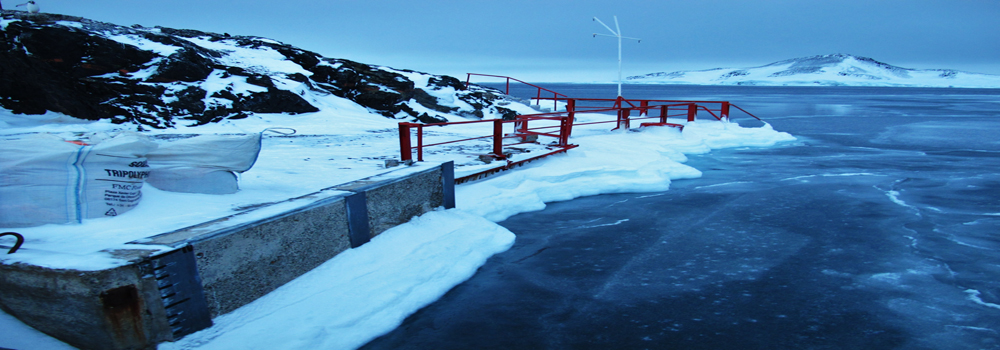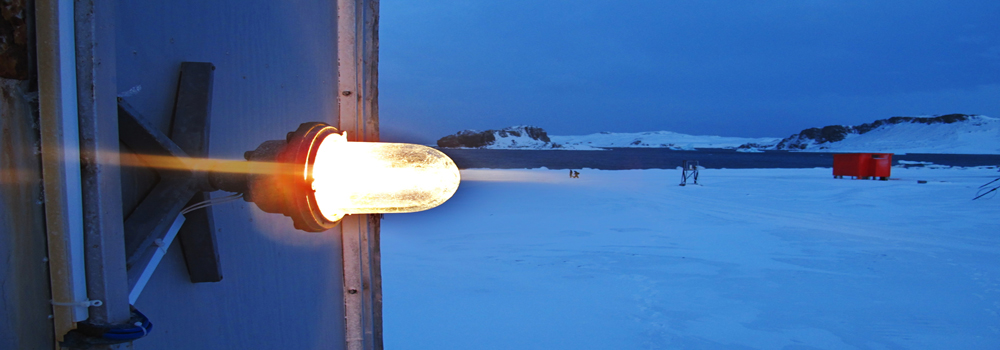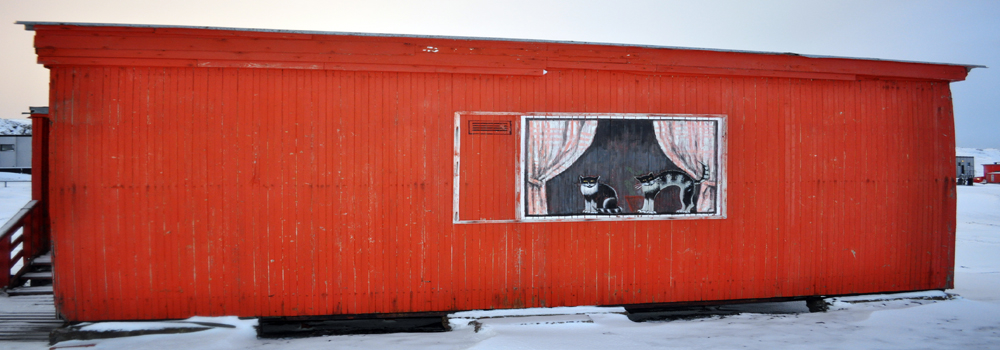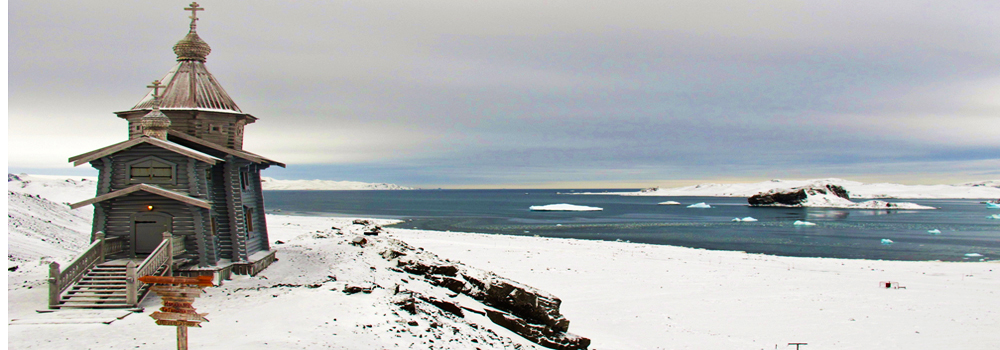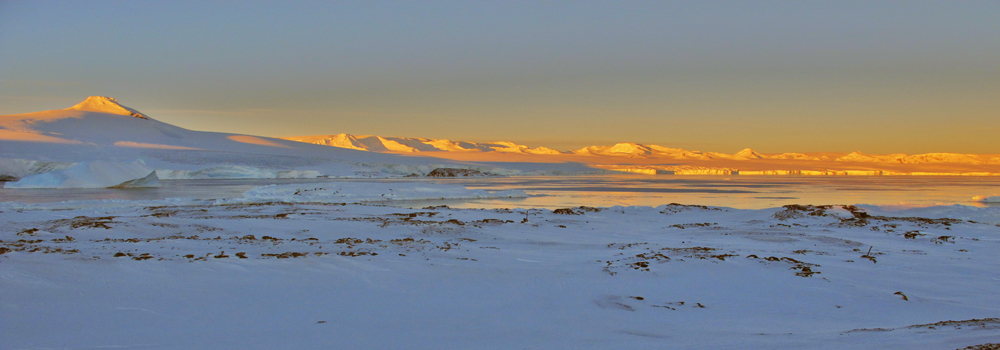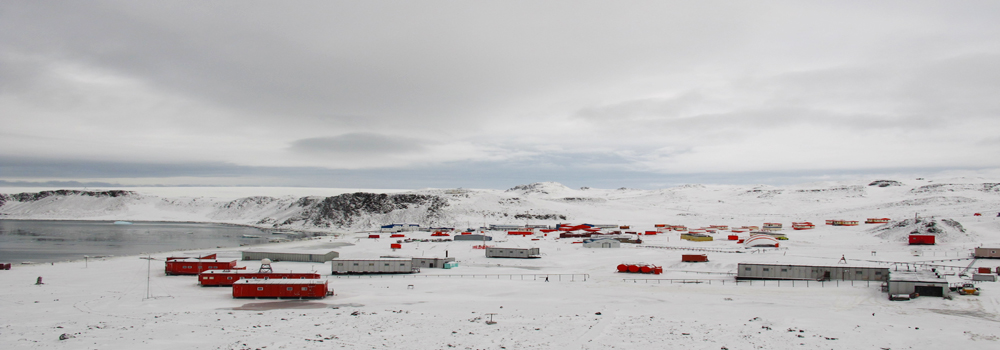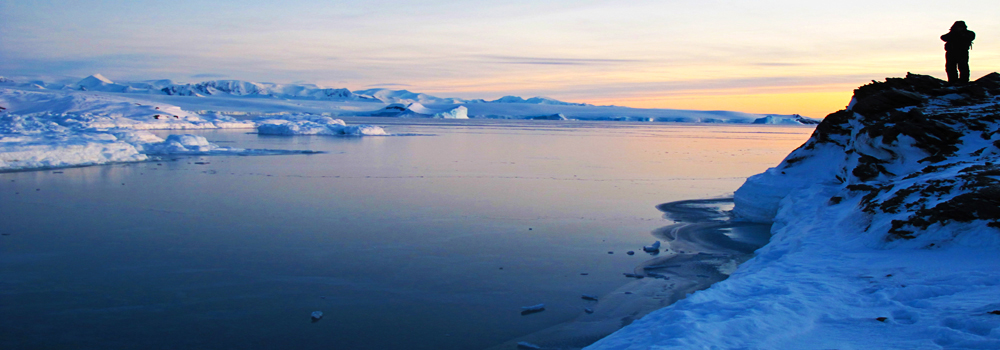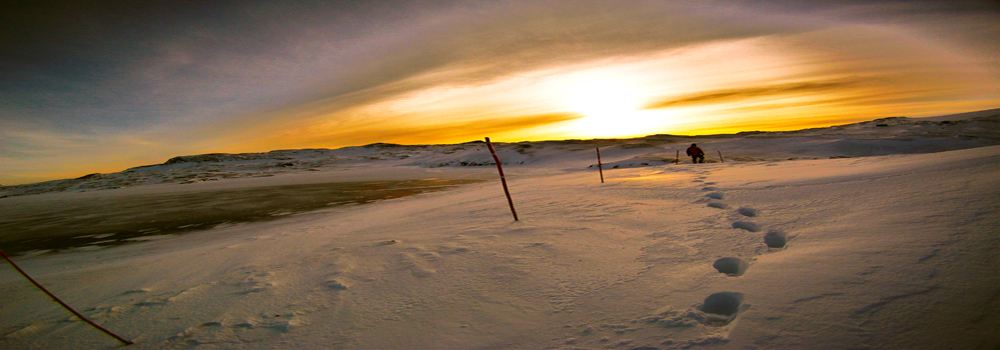"Nightfall on GAiA" is a speculative ethnographic film shot on location in the Antarctic Peninsula between 2011 and 2014.
Logline.
Nightfall on GAiA is a history of hope and fear from the future where a devastating planetary event has left Dr. Xuě Noon confined alone in an Antarctic research station looking backward at our present moment of crises.
Short Synopsis.
Nightfall on GAiA is a history from the future looking backward at our present moment as a turning point. A devastating planetary event has left Xuě Noon confined alone in an Antarctic research station. Her survival is a tale for the future preservation of Antarctica: the last wilderness on a fragile planet and the new frontier for human inhabitation. Xuě Noon is an astrobiologist and her solitary confinement relates to radiation from unprecedented solar storms. It is late April 2042 and the absolute darkness of the polar winter is upon her. As the last sun sets over the Antarctic winterscape, Xuě digs through the ai-archives of the station, and through her innermost memories and dreams, pondering about the prospects of her confinement and her own impending death. The film is an allegory of the unfolding and looming global conflicts over Antarctic resources, and speculates on the possible and the plausible futures of Antarctica in the context of paramount social and ecological crises. The film is told through a personal diary narrative form (akin to the diaries of polar explorers) using the poetic first-person voice-over of a fictional character. This poetic narration is juxtaposed with black and white and colour archival footage from Antarctica (1910’s-1960’s) and live footage filmed in the Antarctic Peninsula in 2011-2013. The dramatic conflict emerges from the hopes and fears about Antarctica and our future as a species in extreme environments.
Extended Synopsis.
Antarctica has become a keystone in an unstable world of shifting global geopolitics, environmental crises, and resource scarcities. This film confronts one of the most pressing issues facing our engagement with the Antarctic region: the future of Antarctica. More specifically, the film uncovers some of the prevailing forces at play in the assembling, mobilising and realising of Antarctic futures. It thus sets in motion a series of new insights into ways of rethinking the history, the present and the future of Antarctica as a unique space, as the last wilderness and the last frontier to explore new worlds.
It’s April 29, 2043. GAIA International Antarctic Station, East Antarctica. Xuě Noon is an astrobiologist searching for microbial life where the sun doesn’t shine. She has lived at GAIA station for 18 months. GAIA is the first International Antarctic Station to be constructed in Antarctica. It was completed in 2035 at a time when “feet-on-the-ground” expeditions were increasingly reduced due to the deployment of continent–wide observing networks and the use of space-borne sensors and year-round 24/7 streaming data nodes operated by ai-grids.
Xuě and her team were preparing to spend their second and last winter in Antarctica, where she was deployed on an international mission to study primeval microbes discovered in Antarctic Lakes 30 years before and their connection to the search for outer space microorganisms. This mission was as a preparatory 2-year operation for an exploratory international mission to Mars.
But something happened 2 weeks ago while she was asleep on a routine extended deep sleep period. She woke up to find she was alone at GAIA Station. The communication systems have been down since the event. Only the ai-database (artificial intelligence archive database) seems to be functioning. She has been receiving only incoherent and fragmented information from colleagues stranded several thousand kilometres away. She is anxiously delaying the looming last sunset for the next 3 months.
As a 13 year old Xuě spent one year in Antarctica with her father (2013) soon after the death of her mother. During that year Xuě meets her soul mate; Naomi, a slightly older Chilean girl living temporarily in the same Antarctic base. Together they discover the story of a girl named Margot in a Ray Bradbury short story. This girl had been living in Venus for 5 years, a torrid planet of fumes and colourful vapours where the sun was only visible for two hours every seven years. She was the only one in her class who had ever seen the sun… back on Earth; but during the event she get’s locked away missing the opportunity to see the sun. Xuě feels Margot was like a sister she never had. Her imaginary friend’s fears of not seeing the sun became her own fears.
Xuě remembers this time and reads excerpts from her dairy. She wonders around the station looking for answers and a way out of her predicament. The station is silent and still. The striking surrounding Antarctic landscape becomes ever more menacing. The days are getting shorter; the permanent darkness is enveloping; the food supplies almost gone. On and on she tries to make contact with the world; but the holographic and quantum communication systems are down. She makes brief contact by short-wave radio with her colleagues who are trapped hundreds of kilometres south of Gaia on the Maglev train that connects all the major national Antarctic stations in East Antarctica.
Xuě spends long hours at the station’s Babel ai-room, seizing the archives, scavenging the data for a sign that can help her understand. The Babel room was built as homage to Antarctica and contains the world’s most complete audio-visual archive of the Antarctic. Linked in real time with museums and science centres around the world it is also where scientists present live feeds from the Antarctic. The live feed has been down since the event, only the database is accessible through the room’s ai-system. Browsing the database, Xuě is hopeful to find something. She views the early 20th century historical footage of the Antarctic; she heaves at the images of mass hunting of whales and seals and re-experiences early Antarctic exploration through archival images in the holographic visionarium; she cross-checks dozens of interviews with scientists, politicians, artists and environmentalists whose opinions, expert and lay, occupy a large portion of the database. She reconstructs the events of the last 30 years in Antarctica since the last time she was there in 2013. She lingers for an answer as the night relentlessly falls at Gaia.


